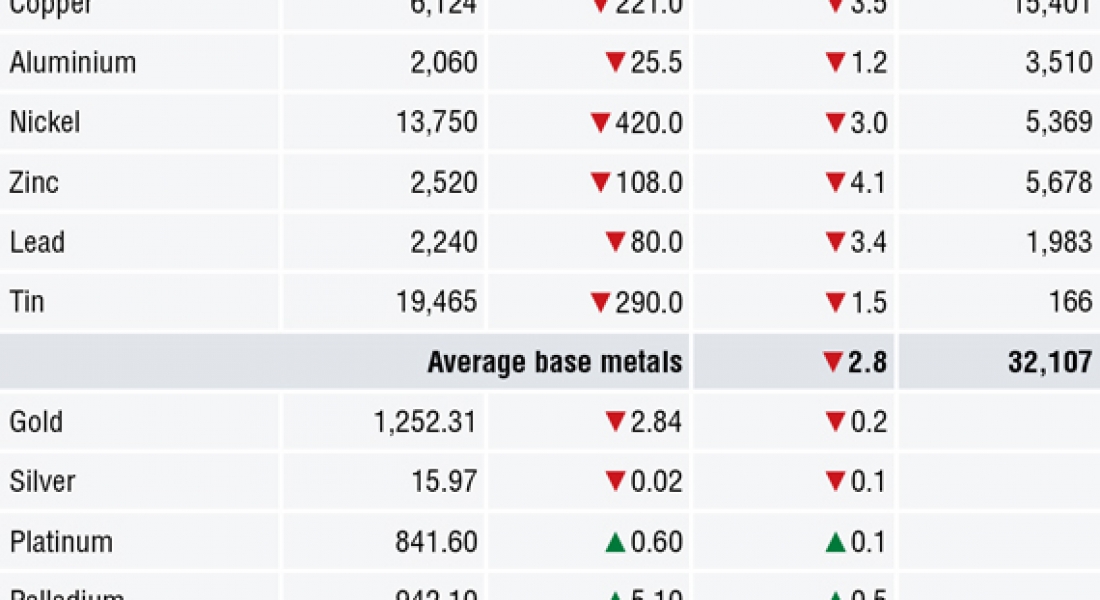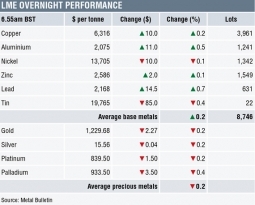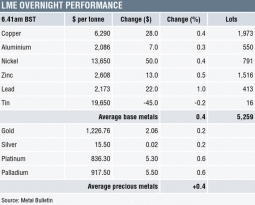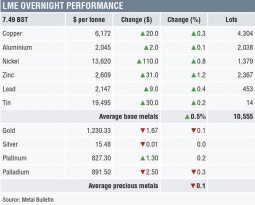An escalation in the United States’ trade war with China, with another $200 billion of Chinese goods now potentially facing tariffs, has rattled base metals prices during early trading on Wednesday July 11.
Three-month base metals prices on the London Metal Exchange were down across the board by an average of 2.8%, led by a 4.1% decline in zinc. Three-month copper was down by 3.5% at $6,124 per tonne.
Volume has been extremely high with 32,107 lots traded as at 7.49am London time.
The precious metals prices were mixed with gold and silver off by 0.2% and 0.1% respectively, while platinum was up by 0.1% and palladium was up by 0.5%. The fact that the precious metals are not suffering to the same extent as the base metals suggests some haven interest is being seen.
In China, the base metals on the Shanghai Futures Exchange were down across the board by an average of 3%, with most actively traded zinc August contract off by 6%, while August copper was down by 3.8% at 47,920 yuan ($7,232) per tonne.
In other metals in China, the September iron ore contract on the Dalian Commodity Exchange was down by 0.2% at 460 yuan per tonne. Meanwhile on the SHFE, the October steel rebar contract was up by 0.2%, December gold was up by 0.1% and the December silver was down by 0.4%.
Spot copper prices in Changjiang were down by 3.3% at 47,830-48,160 yuan per tonne and the LME/Shanghai copper arbitrage ratio was at 7.82.
In wider markets, spot Brent crude oil prices were down by 0.91% at $78.12 per barrel this morning. The yield on US 10-year treasuries, recently quoted at 2.8352%, continued to weaken, while the German 10-year bund yield at 0.3000% is little changed.
Unsurprisingly, the increased trade tensions have led to weakness in Asian equity markets: Nikkei (-1.19%), Hang Seng (-1.49%), CSI 300 (-1.79%), the Kospi (0.59%) and the ASX200 (-0.68%). This follows a stronger performance in western markets on Tuesday, where in the US the Dow Jones closed up by 0.58% at 24,919.66, and in Europe where the Euro Stoxx 50 closed up by 0.37% at 3,473.31.
The dollar index at 94.20 was slightly firmer, but overall seems to be consolidating after its recent pullback. The euro (1.1731) and sterling (1.3272) were consolidating, while the yen (110.97) and the Australian dollar (0.74110) were weaker.
The yuan having firmed in recent days has dropped again and was recently quoted at 6.6610. For now, the other emerging market currencies we follow are not showing much further stress.
Economic data already out this morning shows Japan’s core machinery orders fell 3.7%, but this is an erratic data series. Japan’s producer price index (PPI) climbed 2.8% and tertiary industry activity was up 0.1%.
Data out later includes a UK gross domestic product (GDP) estimate, along with US data that includes PPI, wholesale inventories and crude oil inventories. There are also various central bankers speaking including European Central Bank president Mario Draghi, Bank of England Mark Carney and US Federal Open Market Committee Members Raphael Bostic and John Williams.
The rout in the base metals continues, but this morning’s weaker price levels are starting to attract some buying. For now the market is nervous and flighty, with the path of least resistance to the downside. The question is, how much damage have the markets now discounted?
The precious metals are consolidating after the April to early-July sell-off. The fact gold prices are not suffering the same percentage losses that the base metals are suggests these lower gold prices now make gold more interesting as a haven asset in these troubled times.
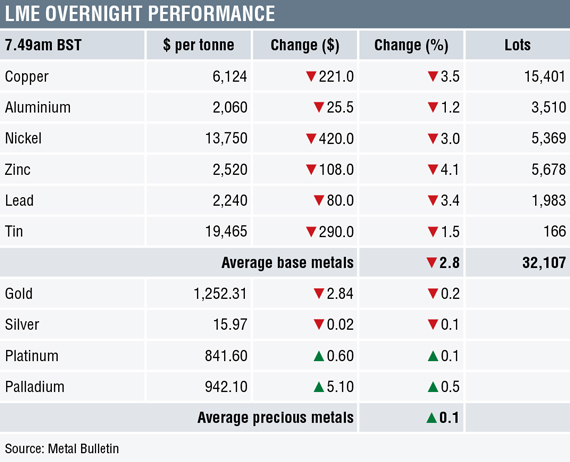

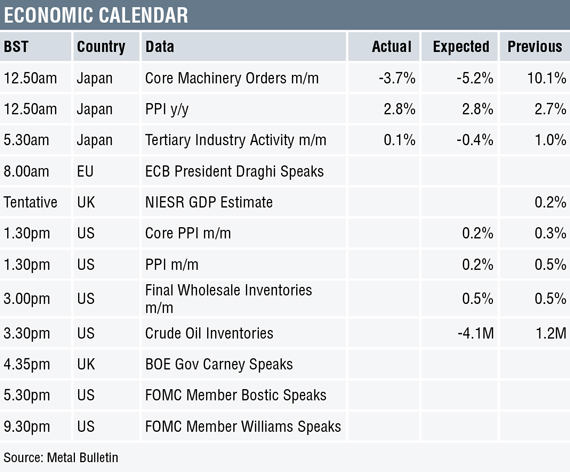
The post METALS MORNING VIEW 11/07: Escalation in US-China trade war sends metals prices crashing appeared first on The Bullion Desk.
Read More
Source: Bullion Desk News

